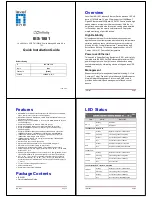
143
The authentication is implemented as follows:
1.
When a user accesses the network for the first time, the access device generates a
MAC-trigger entry that records the user's MAC address and access interface. The user can
access the network without performing portal authentication if the user's network traffic is below
the free-traffic threshold.
2.
When the user's network traffic reaches the threshold, the access device sends a MAC binding
query to the MAC binding server.
3.
The MAC binding server checks whether the MAC address of the user is bound with a portal
user account.
{
If yes, the MAC binding server sends the user authentication information to the access
device to initiate portal authentication. The user can pass portal authentication without
entering the username and password.
{
If not, the MAC binding server notifies the access device to perform normal portal
authentication for the user. After authentication, the access device sends the user's MAC
address and authentication information to the MAC binding server for MAC-account
binding.
4.
When the user passes portal authentication, the access device removes the MAC-trigger entry
for the user.
NOTE:
For information about MAC binding server configuration, see the user manual of the server.
Portal configuration task list
Tasks at a glance
(Optional.)
Configuring a portal authentication server
(Required.)
Configuring a portal Web server
(Required.)
Enabling portal authentication
(Required.)
Specifying a portal Web server
(Optional.)
Controlling portal user access
•
Configuring a portal-free rule
•
Configuring an authentication source subnet
•
Configuring an authentication destination subnet
•
Setting the maximum number of portal users
•
Specifying a portal authentication domain
•
Specifying a preauthentication domain
•
Specifying a preauthentication IP address pool for portal users
•
Enabling strict-checking on portal authorization information
•
Enabling portal authentication only for DHCP users
•
Enabling outgoing packets filtering on a portal-enabled interface
(Optional.)
Configuring portal detection features
•
Configuring online detection of portal users
•
Configuring portal authentication server detection
•
Configuring portal Web server detection
•
Configuring portal user synchronization
(Optional.)
Configuring the portal fail-permit feature
(Optional.)
Configuring BAS-IP for portal packets sent to the portal authentication server
Содержание FlexFabric 5940 SERIES
Страница 251: ...238 ...
















































